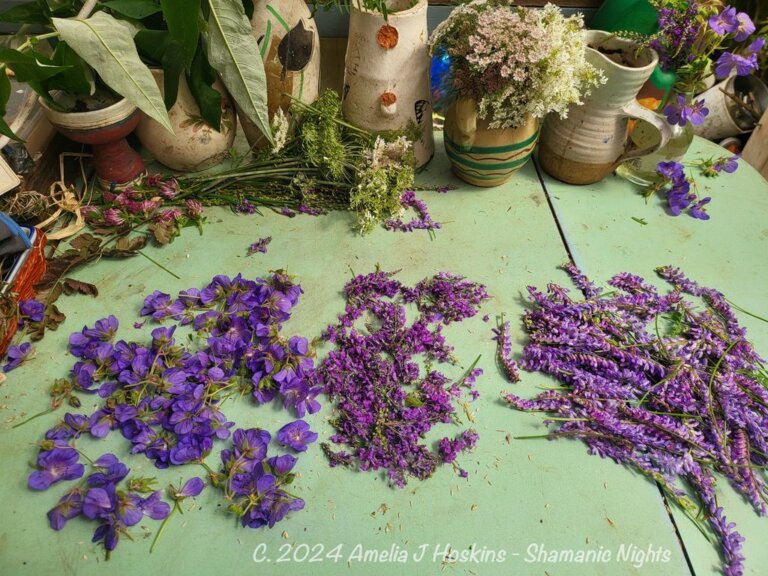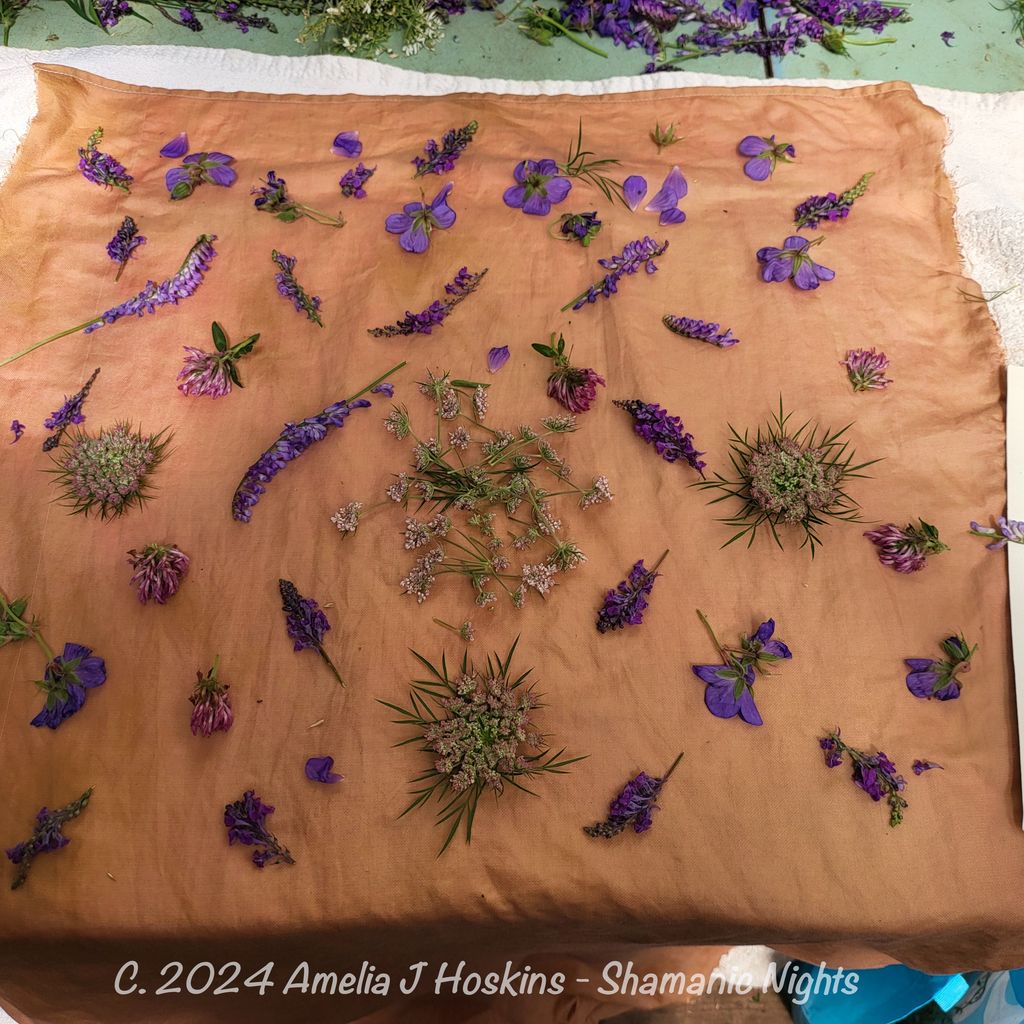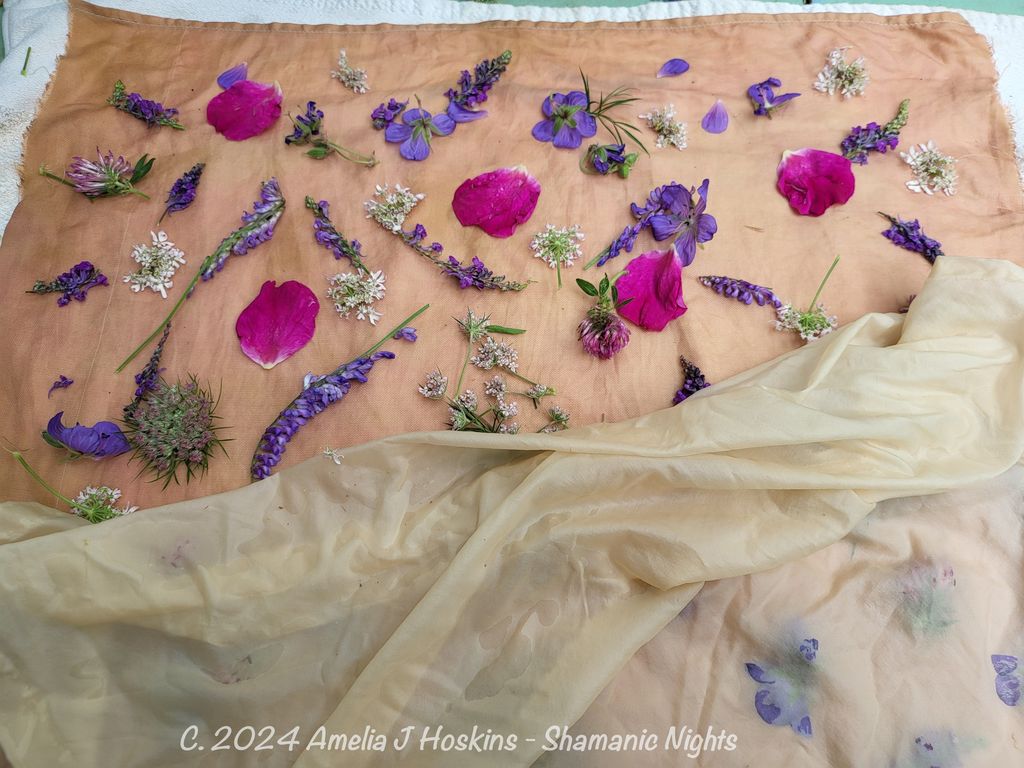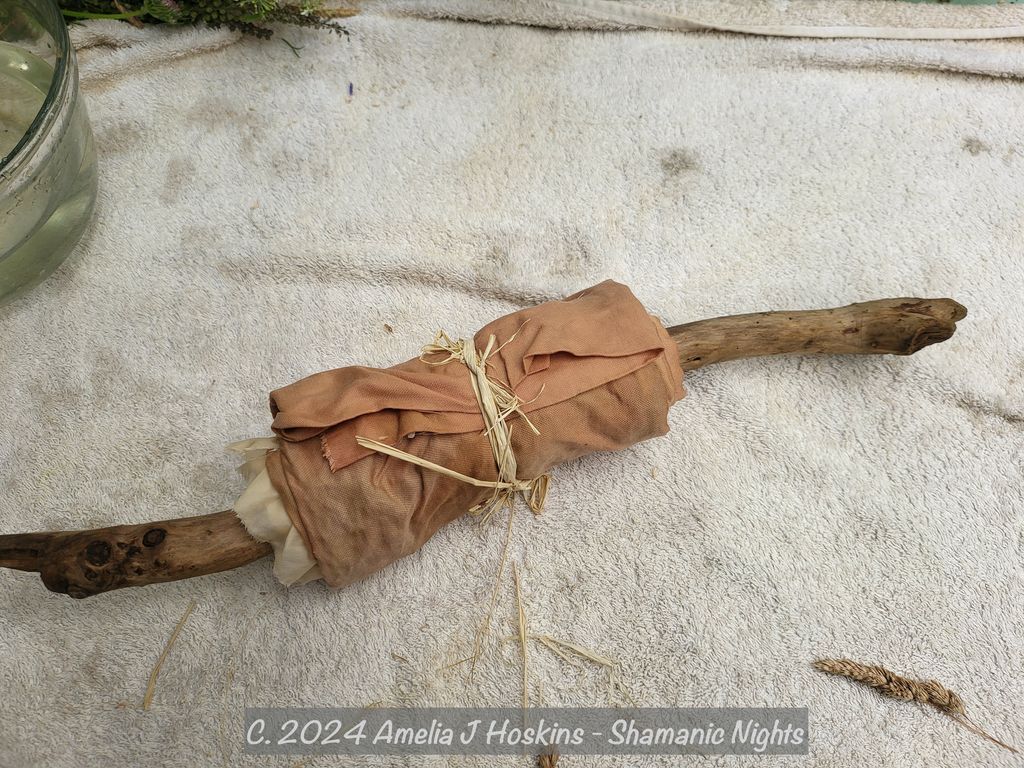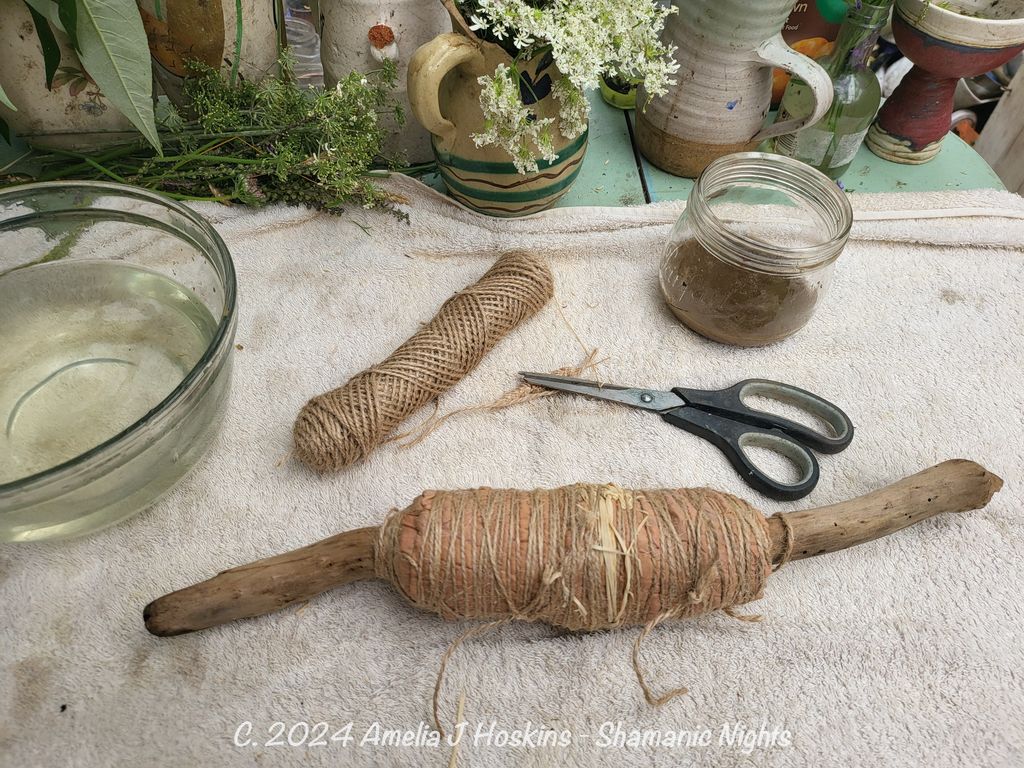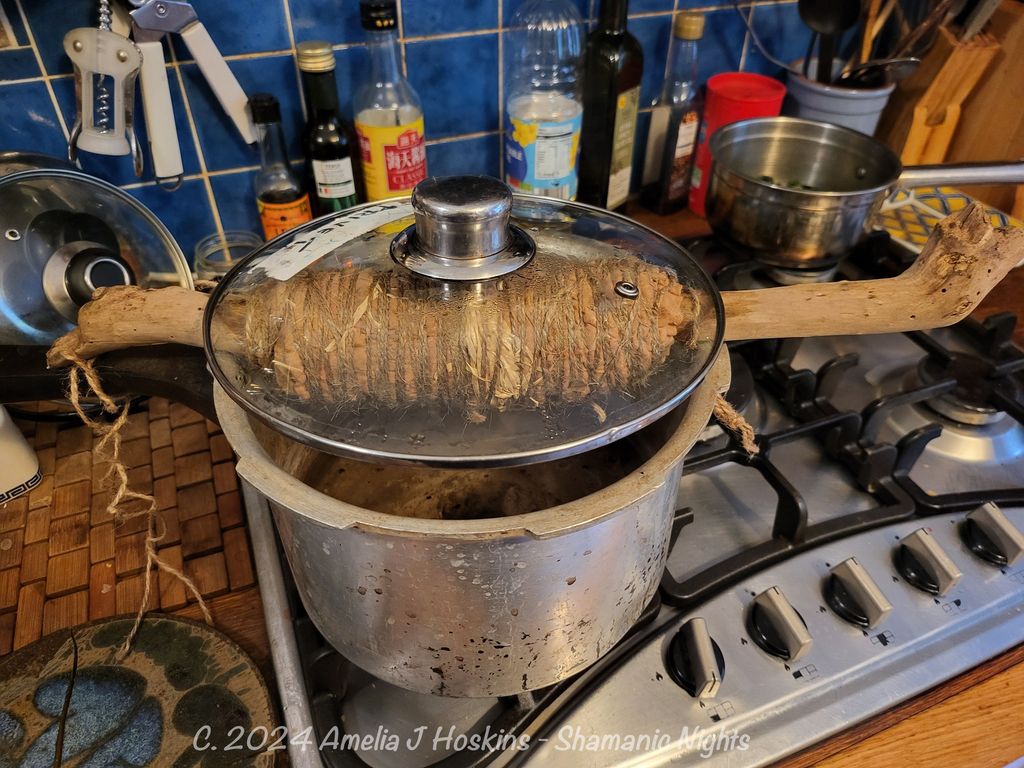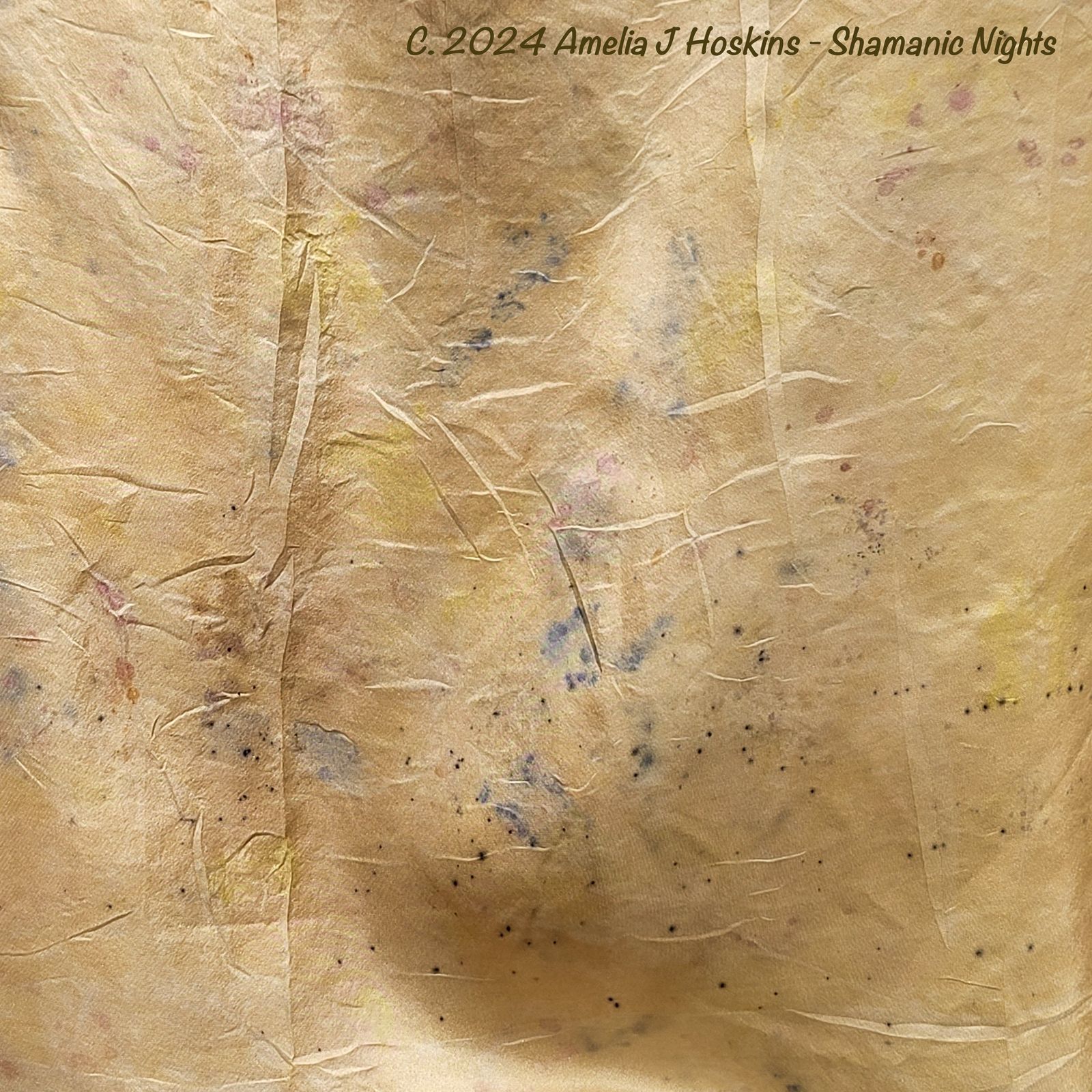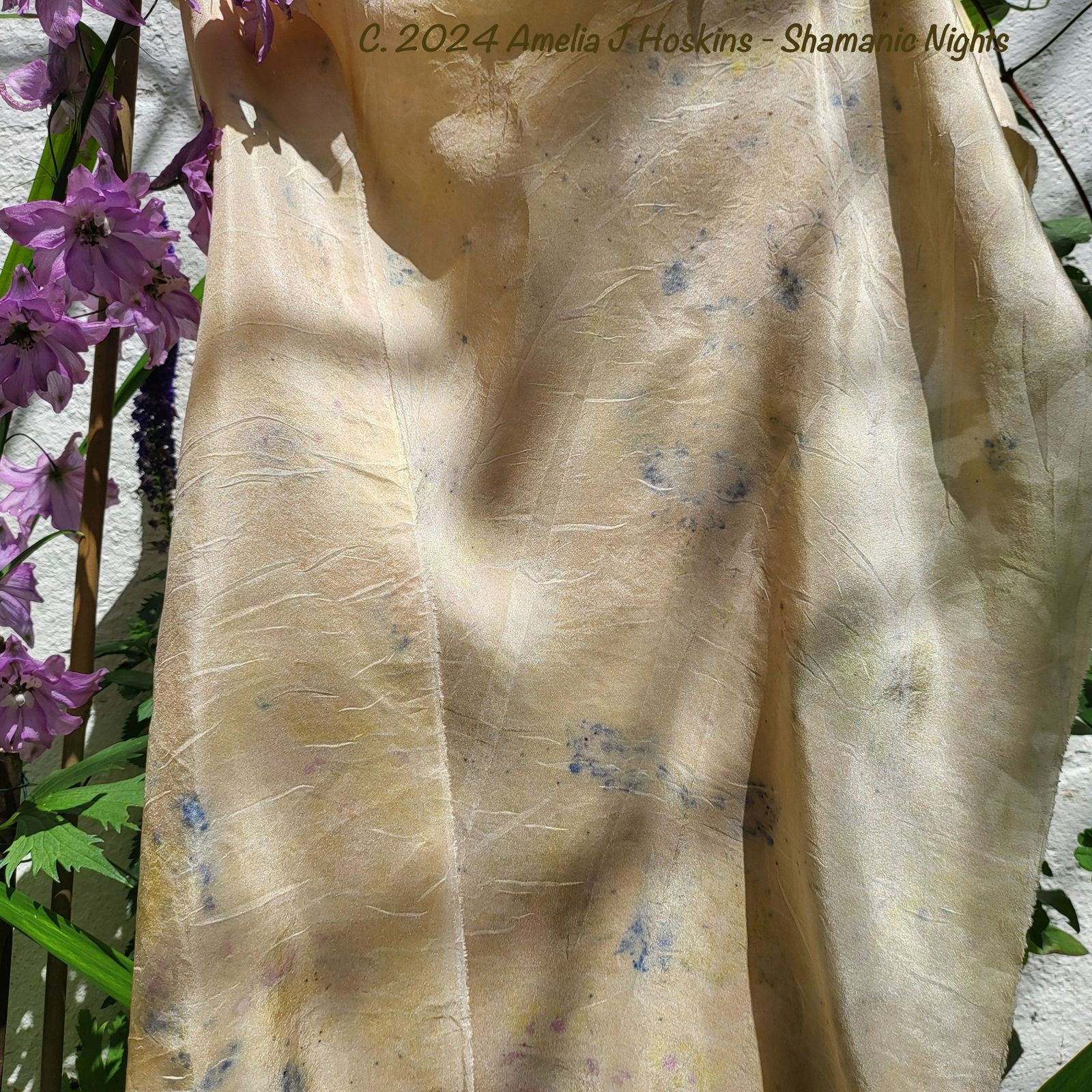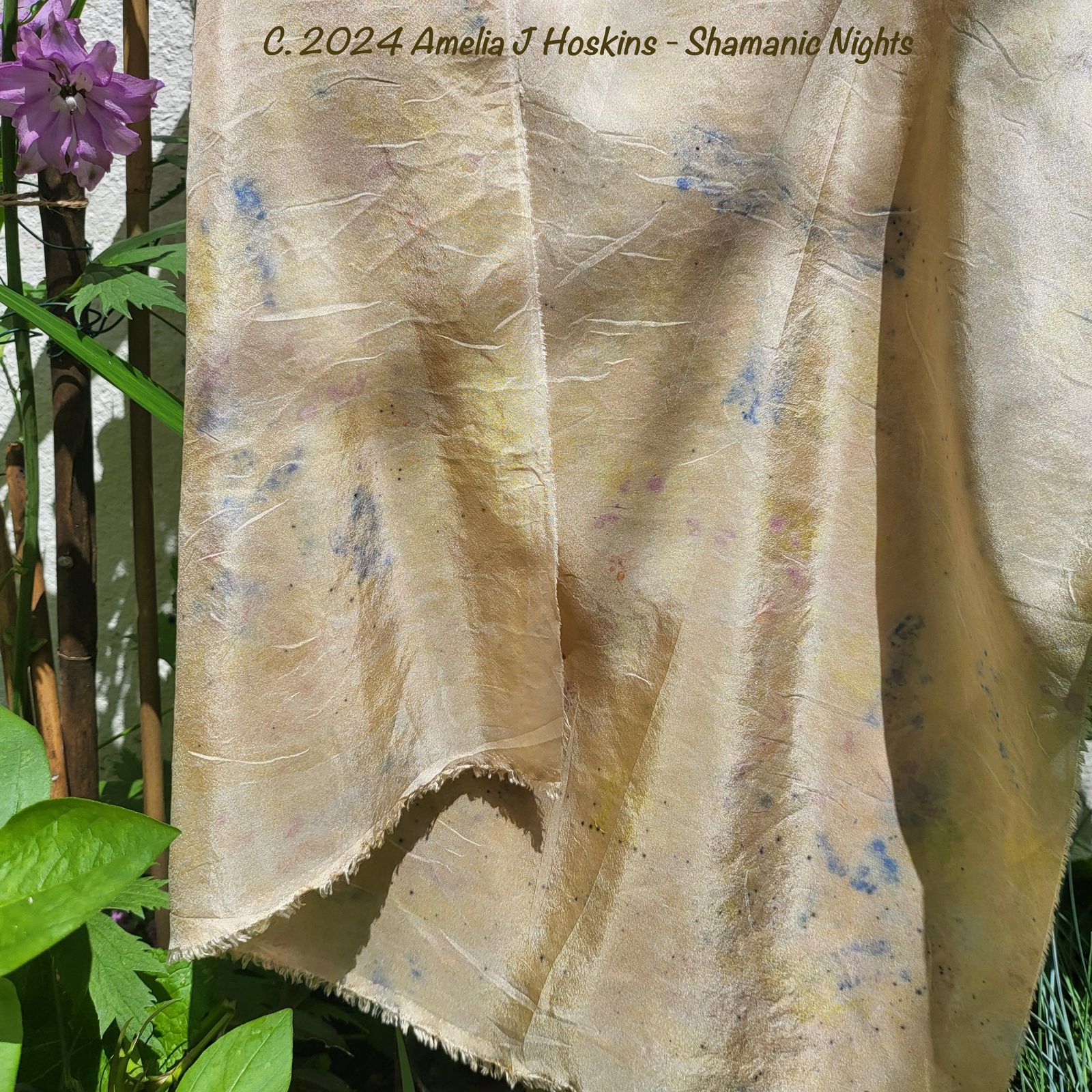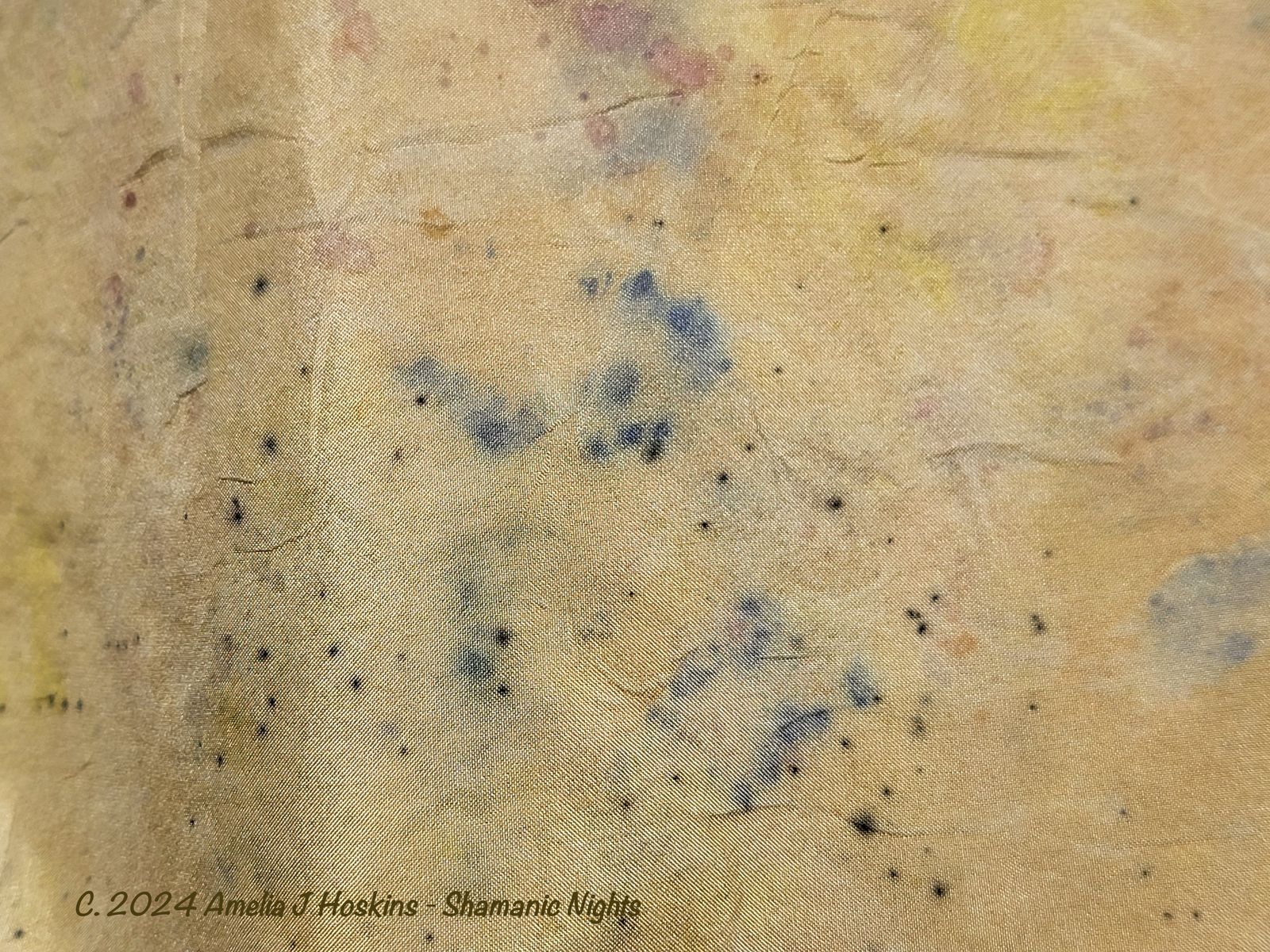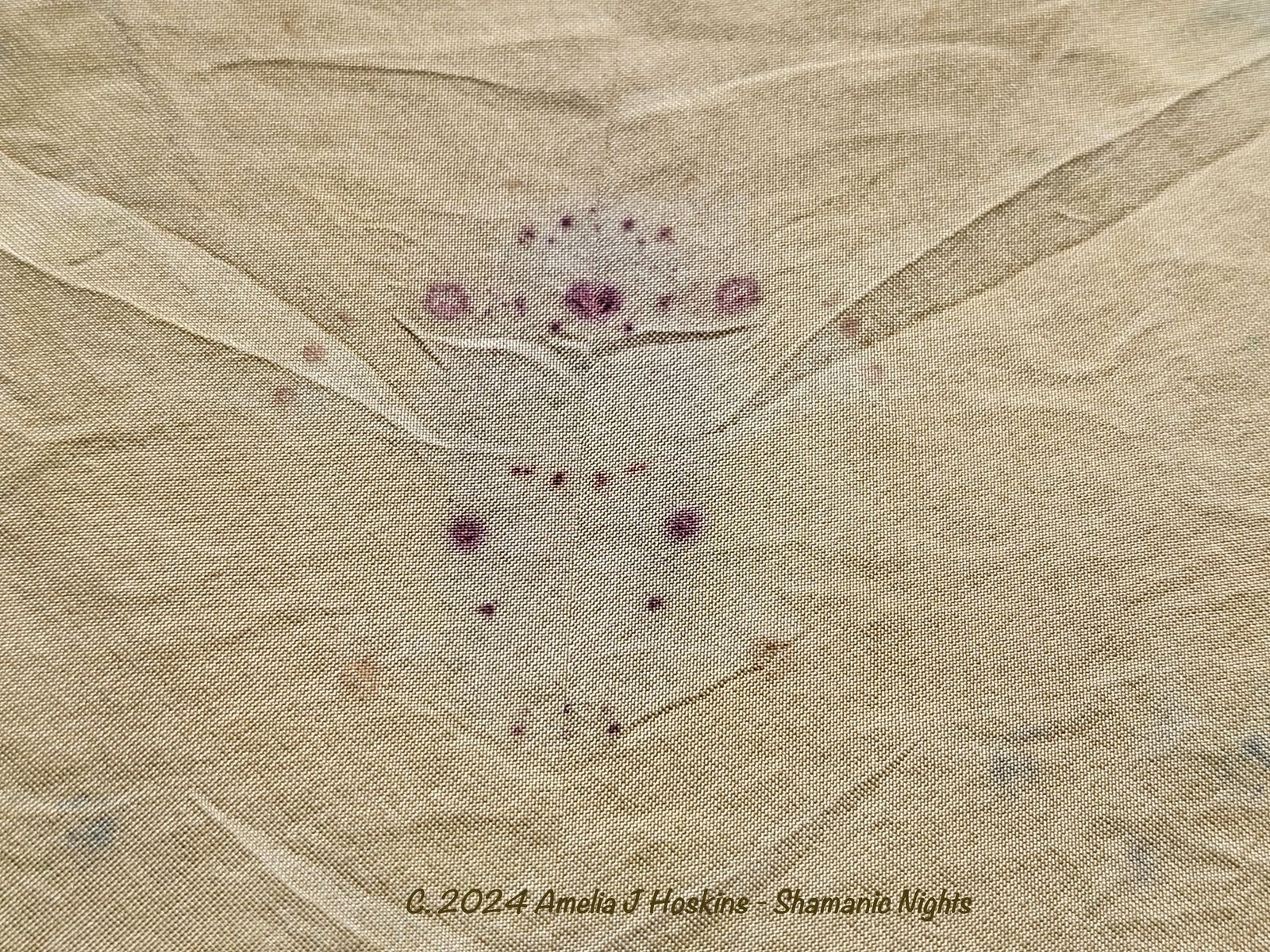Purple Bundle dye double silks
Cranesbill - Linaria - Vetch
Experimental bundle dye to see what 'takes'. Foraged purple flowers. Linaria flowers were almost seasonally finished; so tried purple vetch also, still massing into flower.
Habotai light gold silk was pre-soaked in Alum mordant. Hawthorne dyed thicker Ahimsa silk was pre-soaked in 10mls of red acid dye, (used for silk painting) to change the gold slightly. Both silks to be steamed together.
Two types of silk: Habotai light, Ahimsa darker
Dark gold Ahimsa as 'blanket' around Habotai silk sandwiched. Silk 'sandwich' was folded over itself into thirds, before winding around a thick stick. Tightly tied with string, but uncovered, before steaming over an open saucepan.
While folding over, area was sprinkled with vinegar/water weak mix. (too strong vinegar can causer yellow-browning). Queen Anne's lace was sponged with rust water.
Steaming pot
Improvised steaming stick; rose tree root rests across pan. Sits, or can be tied on. Length enables handles to turn around. Bundle was steamed for 5 hours simmered, turning part time, then left in position overnight and opened after 24hrs.
This method, with a 'blanket silk layer' has given cleaner prints than other methods with lid down and long steaming. Conclusion: open dye pan avoids bleeding of flower colour which happens during closed steams. [or do shorter steams].
STEAMING RESULTS
Linaria (semi wild) produces a very good dark blue, in places 'Prussian' blue shining turquoise, in blurred shapes from the tops of Linaria flowers. Speckles can be seen where I broke and scattered linaria flower heads, giving dark blue-black dots. Shapes created by blue dye are in places mirrored due to the folding of the Habotai silk into three, together with a 'blanket' of Ahimsa silk.
Mirror prints appear on darker gold Ahimza silk, but feinter. (Ahimsa was not soaked in Alum, but was briefly soaked in a weak magenta acid dye. (A tip from another dyer that a pre soak in an acid dye will increase density of floral 'prints'; especially if iron modifier used).
Red clover also made purple prints of the small tiny petals. [They may have shown more purple dots if they had been flattened out first. These tiny petals could have been sprinkled over]. No evidence of purple vetch giving a dye result, nor blue cranesbill.
Queen Anne's lace produced a good yellow, though just blurred areas, where they were placed in centre of silk scarf lengths. They were sponged with rusty-nail 'iron' water modifying mixture.
